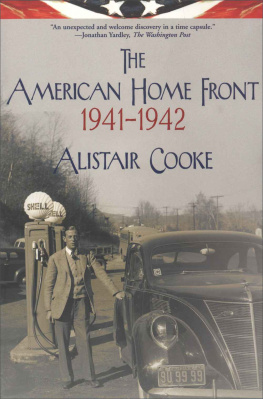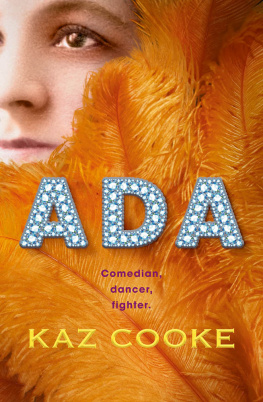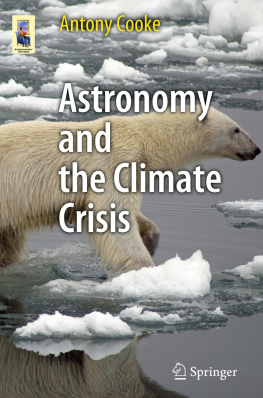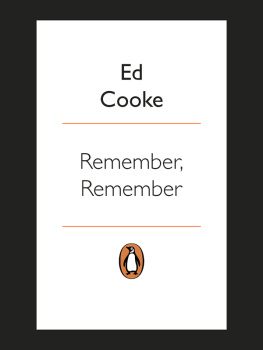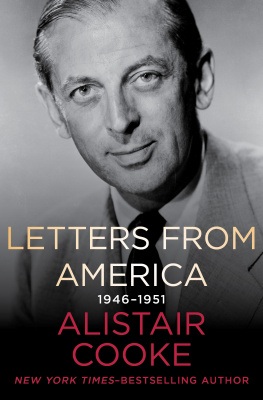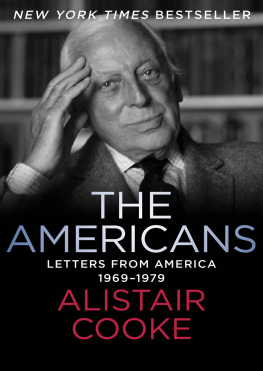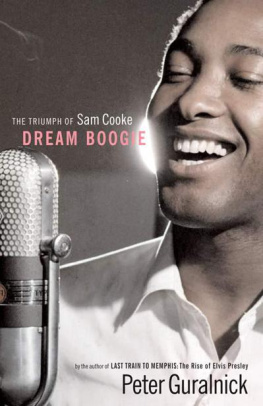Praise for The American Home Front:
A remarkable record of his journey across America Here are the antecedents of who we are now, grasped with a clarity and foresight that is all the more stunning for having been hidden away in a closet for nearly sixty years.
Verlyn Klinkenborg, Bookforum
This book sat forgotten in a closet in Cookes Manhattan apartment until, shortly before his death, it was discovered by his secretary. And if theres any decency left in this world, some grateful reader has sent that woman a couple dozen roses. Cooke is clear-eyed, utterly free of cant, and with a healthy suspicionif not contemptabout the tendency of journalists to issue sweeping proclamations. Cooke captures a world brought to sudden stop, where every word, gesture, and action that does not take into account the immensity of collective grief seems obscene.
Charles Taylor, Newsday
Cooke was one of our countrys favorite Englishmen In his time, probably the most widely read and heard chronicler of America It is a story about the nation as a whole.
Art Chapman, Fort Worth Star-Telegram
Reading his report is like unearthing a time capsule or finding a long-forgotten snapshot. At another level, his account is an interesting travelogue with perceptive commentary on practically the entire country.
Norman Rowlinson, The Buffalo News
Even after all these years, and all those countless previous books about the wartime home front, Cooke has interesting things to tell us. It is, in effect, a letter from the front lines, and the immediacy of it is real and valuable.
Jonathan Yardley, The Washington Post
This is a work of admiration. It is hard to think of a better moment to remind a generation steeped in a facile anti-Americanism that without that countrys gigantic moral and material support, EuropeBritain includedmight have found itself submerged for many a year under the Teutonic Taliban.
George Walden, Bloomberg News
Revealing portrait A vivid, endlessly interesting view of the home front.
Kirkus Reviews
A deftly constructed time capsule.
Library Journal
Something like reading a history and a historical document at the same time Cookes observation is keen. The writing is, in the best sense of the word, polishednovelists should be as gifted as Cooke at capturing the beauties of naturewith striking, even elegant, metaphors and similes.
Roger K. Miller, Pittsburgh Tribune-Review


The American Home Front

The American Home Front 1941-1942
Alistair Cooke

Copyright 2006 by the Estate of Alistair Cooke
Foreword copyright 2006 by Harold Evans
All rights reserved. No part of this book may be reproduced in any form or by any electronic or mechanical means, or the facilitation thereof, including information storage and retrieval systems, without permission in writing from the publisher, except by a reviewer, who may quote brief passages in a review. Any members of educational institutions wishing to photocopy part or all of the work for classroom use, or publishers who would like to obtain permission to include the work in an anthology, should send their inquiries to Grove/Atlantic, Inc., 841 Broadway, New York, NY 10003.
First published in 2006 in Great Britain by Allen Lane,
The Penguin Group, London
Frontispiece portrait of Alistair Cooke by
Ray Lee Jackson, early 1940s
All illustrations are copyright the Estate of Alistair Cooke
except the frontispiece, where the copyright is untraced.
Printed in the United States of America
Library of Congress Cataloging-in-Publication Data
Cooke, Alistair, 19082005
The American home front, 19411942 / Alistair Cooke.
p. cm.
Includes index.
eBook ISBN-13: 978-1-5558-4814-9
1. United StatesSocial life and customs1918-1945. 2. United StatesSocial conditions19331945. 3. United StatesHistory1933 1945. 4. World War, 19391945United States. 5. Cooke, Alistair, 19082005TravelUnited States. I. Title.
E169.C7495 2006
940.5373dc22 2005058860
Grove Press
an imprint of Grove/Atlantic, Inc.
841 Broadway
New York, NY 10003
Distributed by Publishers Group West
www.groveatlantic.com
Contents
Acknowledgements
The Estate of Alistair Cooke would like to thank those who have made the publication of this book possible.
Patti Yasek, who found the manuscript at the bottom of a crowded closet in Alistair Cookes New York apartment, when clearing through other papers, just a few weeks before the authors death and was able, at the speed of light, to retype it ready for editing; Colin Webb, Mr Cookes book editor and literary executor, who responded to his request to arrange this publication; George Perry, who provided the first assessment of the manuscript and recognized the considerable value of the content; Walton Rawls, who has edited, with distinction and understanding, the original manuscript ready for press; John Byrne Cooke, who has archived Mr Cookes photographs and has expertly provided the images published in this volume together with notes that have informed the captions; Stuart Proffitt, publishing director of Penguin Press and Morgan Entrekin, the publisher, and Jamison Stoltz, the editor, at Grove Atlantic, who have enthusiastically encouraged us all.
Foreword
Wartime Britain, though few nowadays have a personal memory of those years, is fairly well etched into our collective imaginations: the silent blacked-out streets, the night skies lit by beams searching for bombers; the raucously cheerful Workers Playtime lunch-hour concerts broadcast from a factory somewhere in the North; the boxed gas masks on every scurrying shoulder; the nightly pip-pip-pip preceding BBC Radio bulletins, where the only consolation for the invariably bad news was that the unshaky baritone of the announcer Alvar Lidell suggested that somehow there would always be an England. There was a palpable sense of isolation, and then there was the marvellous moment when Mr Lidell at last had something good to relate. America had entered the war.
Nobody in Britain had much more than the foggiest notion then what the Americans might bring to the war, or indeed what Americans were really like: there was just a palimpsest of Franklin Roosevelt/Charlie Chaplin/John Steinbecks Okies. Saul Steinbergs famous New Yorker cartoon was drawn years later but summed up the perspective then and now, the skyscrapers of Manhattan distended westwards to Hollywood and the Pacific, with something vague and dusty in between. The arrival in ration-book Britain of GIs armed with the temptations of nylon stockings and cartons of cigarettes excited more envy than curiosity; after all, they came in late last time, took the credit for whipping the Kaiser didnt they? and they were coming in late again.
What was happening in the vast mystery of America was, of course, of supreme importance and more than passing interest, as that new American citizen Alistair Cooke realized at the time. Having worked in London as the BBCs film critic, he had returned to America in 1937 in time to hear the drum rolls of war reaching Washington from the Far East; he was in the capital for Pearl Harbor oh December 7,1941; and then on the morning of February 27, 1942 he left the air of tobacco-choked energy that is the Washington odor of panic. Forsaking the hot news from the capital, he set out on a prodigious journey to explore the country, south, west, north and east. On the first trip he drove much of the way in a car with five retreads, then in 1943 and 1944 he did the trip again by train and bus. Only a handful of Americans have seen the country like that, still less reflected on its diversities. There is nothing weird about the doctor he meets in St Louis who tells him, I never was west of Louisville nor east of Charleston, West Virginia.

